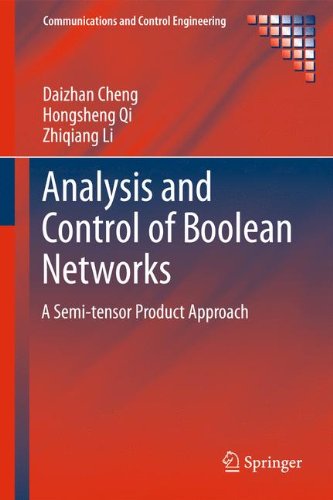

Most ebook files are in PDF format, so you can easily read them using various software such as Foxit Reader or directly on the Google Chrome browser.
Some ebook files are released by publishers in other formats such as .awz, .mobi, .epub, .fb2, etc. You may need to install specific software to read these formats on mobile/PC, such as Calibre.
Please read the tutorial at this link: https://ebookbell.com/faq
We offer FREE conversion to the popular formats you request; however, this may take some time. Therefore, right after payment, please email us, and we will try to provide the service as quickly as possible.
For some exceptional file formats or broken links (if any), please refrain from opening any disputes. Instead, email us first, and we will try to assist within a maximum of 6 hours.
EbookBell Team

5.0
48 reviewsThe Boolean network has become a powerful tool for describing and simulating cellular networks in which the elements behave in an on–off fashion. Analysis and Control of Boolean Networks presents a systematic new approach to the investigation of Boolean control networks. The fundamental tool in this approach is a novel matrix product called the semi-tensor product (STP). Using the STP, a logical function can be expressed as a conventional discrete-time linear system. In the light of this linear expression, certain major issues concerning Boolean network topology – fixed points, cycles, transient times and basins of attractors – can be easily revealed by a set of formulae. This framework renders the state-space approach to dynamic control systems applicable to Boolean control networks. The bilinear-systemic representation of a Boolean control network makes it possible to investigate basic control problems including controllability, observability, stabilization, disturbance decoupling, identification, optimal control, etc.
The book is self-contained, requiring only knowledge of linear algebra and the basics of the control theory of linear systems. It begins with a short introduction to prepositional logic and the concepts and properties of the STP and progressing via the (bi)linear expression of Boolean (control) networks to disturbance decoupling and decomposition of Boolean control systems. Finally multi-valued logic is considered as a more precise way of describing real networks and stochastic Boolean networks are touched upon. Relevant numerical calculations are explained in an appendix and a MATLAB® toolbox for the algorithms in the book can be downloaded from http://lsc.amss.ac.cn/~dcheng/.
Analysis and Control of Boolean Networks will be a fundamental reference for researchers in systems biology, control, systems science and physics. The book was developed for a short course for graduate students and is suitable for that purpose. Computer scientists and logicians may also find this book to be of interest.